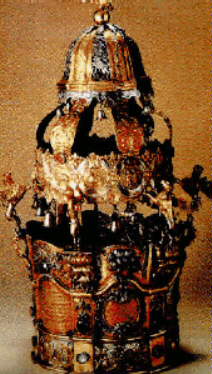JEWISH ART, like art in Russia after the communist take-over, scarcely exists in its own right and culturally its influence on mankind has been negligible – that is until Jewish ‘art’ during the present century became positively baneful.
In Russia, however, there is a traditional Russian art from pre-communist days – literature, music and the ballet which flourished under the Tsars and upon the significance of which the communist regime traded unblushingly.
The case of Jewish art is different since until modern times the Jews had no nation state and the scope of aspiring artists was limited by the social conditions imposed on the Jews in varying degrees of severity in different countries and over many centuries. They were in fact forbidden to indulge in important artistic activities. Obviously there must have been reasons for this and for the apparently harsh treatment of these people.

It is not proposed to explore in depth these reasons or to analyse why nobody loves the Jews. Indeed, with the beady eye of the Board of Deputies of British Jews probing everywhere in efforts to neutralise the world’s growing hostility to the troublesome state of Israel with all its ramifications, it might be dangerous to assert the right of open criticism.
From the earliest times visual art was discouraged among conforming Jews by the Ten Commandments – Thou shall not make unto thee a graven image, nor any manner of likeness of anything that is in the heaven above or that is in the water under the earth. This oppressive injunction was given out in more detail in Deuteronomy IV, 17-18. Admittedly the prohibition was variously interpreted throughout later centuries, but at least in 66 A.D., after the expulsion of the Romans, the ban was emphatically observed by Jewish Government order. Throughout this early period of Jewish history many intolerant iconoclasts emerged and on occasion even the Romans were forced to comply with the wishes of God’s Chosen when it came to the display of human images and statues.











